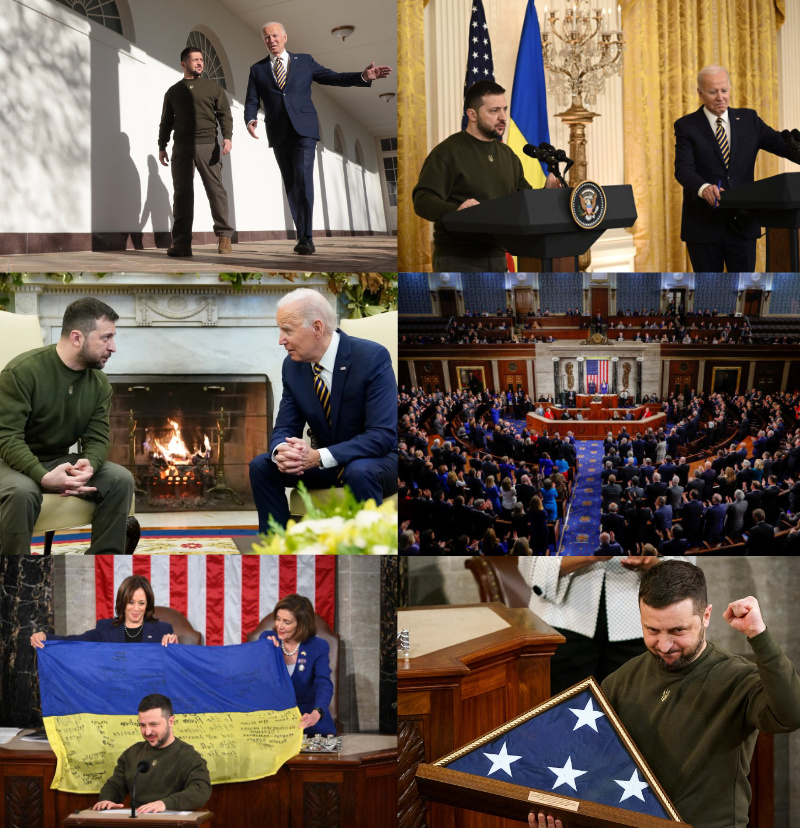

It was a secret until Monday, and then the cat was out of the bag. So, by Tuesday, everyone knew that Ukrainian leader Volodymyr Zelenskyy would be paying a visit to Washington. And that is exactly what he did yesterday.
Zelenskyy was the center of the sort of dog and pony show you would expect under circumstances like this. In other words, he took a walk with Joe Biden on the south lawn of the White House (photo op!), held a joint press conference with the President (photo op!), and met with Biden in the Oval Office (photo op!). Zelenskyy then headed over to the Capitol, where he addressed a joint session of Congress (photo op!), unfurled and presented them with a Ukrainian flag (photo op!), and then received an American flag that flew over the Capitol (photo op!). In case you think we're being facetious:

As a former actor, Zelenskyy knows how to put on a show. In addition to the photo ops, his address to Congress was delivered in English and was full of references to U.S. history (especially the American Revolution). As is clear in the pictures, he also wore his "wartime leader" wardrobe. The Ukrainian has also studied the U.S. system of government, and so threw in a few nods to the Republican Party and several references to the need for bipartisan and bicameral support. It's going to be a bit harder for Republican hardliners to oppose aid to Ukraine after this performance. Or, perhaps more importantly, it's going to be easier for Republican supporters of Ukraine to hold the line and continue to back Zelenskyy.
During the Oval Office meeting, Biden and Zelenskyy discussed broadly what the end of the war would look like. The two men were short on specifics during their press conference, although the Ukrainian made clear that: (1) the outlines of an endgame are visible, but (2) the war likely won't end soon, and (3) the war definitely won't end with Ukrainian concessions to Russia.
That is where things stand, then. Who knows how long the war will continue? Sometimes meetings like this mark the beginning of the endgame (e.g., The Tehran Conference in late 1943). And sometimes, meetings like this change very little (e.g., the U.S.-Vietnam meetings in Paris in 1968). Only the passage of time will reveal which situation is more analogous. (Z)